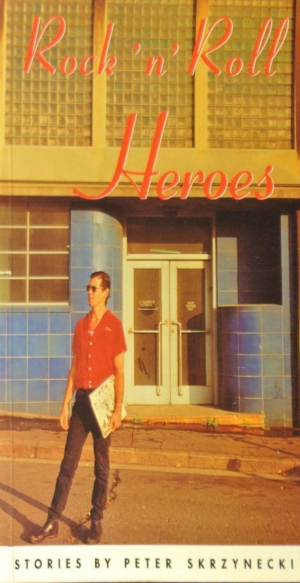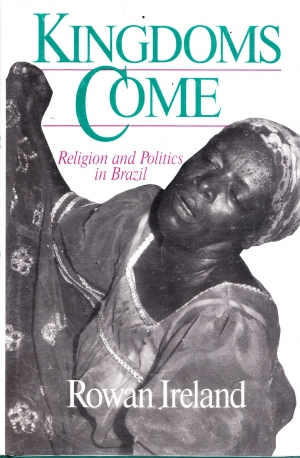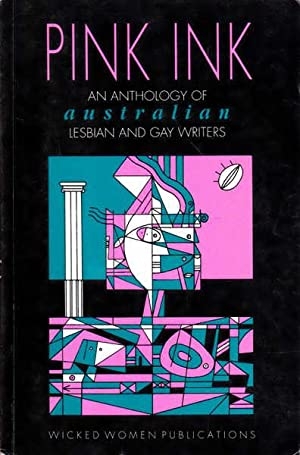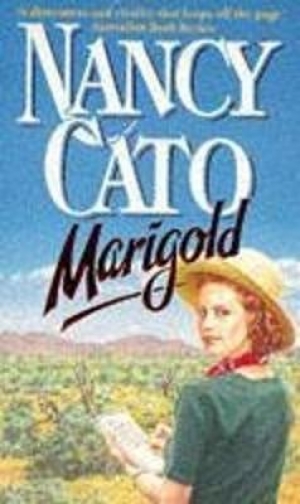Archive
Andrew Peek reviews 'Rock ‘n’ Roll Heroes' by Peter Skrzynecki
For its double epigraph, Rock’n’Roll Heroes combines a couple of lines of Midnight Oil’s Hercules – ‘my life is a valuable thing / I want to keep it that way’ – with six wonderfully numinous sentences from Thomas Traherne:
... (read more)Greg Dening reviews 'Kingdoms Come: Religion and politics in Brazil' by Rowan Ireland
Kingdoms and kingdoms go, but great books last forever. Rowan Ireland’s is a great book. It catches the otherness of a Brazilian religious/political experience tenderly, humbly. It is masterfully academic and lovingly humane at the same time.
... (read more)Rosemary Sorensen reviews 'The Butcher Boy' by Patrick McCabe
When, the opening pages of The Butcher Boy, it becomes clear that the narrator is an uneducated toughie whose sorry history is going to be the subject of the book, the reader’s danger flags are likely to be unfurled. To sustain such a voice without losing credibility is a tricky task. But the first chapter establishes that voice with exceptional skill, and this success continues through almost to the final scene, which curls back to the beginning, with the narrator an old man, remembering slowly, frighteningly, his tragic life.
... (read more)Tim Rowse reviews 'Mining and Indigenous Peoples in Australasia' by J. Connell and R. Howitt (eds.), and 'Aborigines and Diamond Mining: the politics of resource development in the East Kimberley Western Australia' by R.A. Dixon and M.C. Dillon (eds.
If John Hewson leads the next Australian government, we are likely to see a reversal of the current government ban on mining at Coronation Hill and the lifting of other impediments to mining. Should the fight to preserve an indigenous right to negotiate other’s access to mineralised lands have to be renewed, these two books will make invaluable background reading. They document the awesome political responsibilities on nation-states wishing to encourage economic development but trying also to satisfy the legitimate and changing claims of the traditional owners of mineralised lands. National leader’s political commitment to indigenous rights is only one of the issues highlighted here. Of equal importance is the complex and changing attitudes of the landowners themselves.
... (read more)Danielle Garlick reviews 'Portrait of an Artist' by Brian Adams, 'Aboriginal Australian Art' by Ronald & Catherine Berndt and John Stanton, 'The Journeyman' by Salvatore Zofrea and Sally McInerney, 'A Buyer’s Guide to Australian Art' by Graham Ryles
It used to be the case that readers interested in the visual arts in Australia had to put up with long dry spells between the publication of art books. But, over the last three decades in particular, writing about the visual arts in Australia, in terms of its scholarly and especially in terms of its numerical strength, has undertaken a quiet revolution.
... (read more)John Carroll reviews 'The Japanese Job' by Peter Corris, 'The Misplaced Corpse' by A.E. Martin, and 'The Whispering Wall' by Patricia Carlon
The remarkable Peter Corris has done it again, producing his third book this year, with probably a couple still to come. I say remarkable because, with the occasional lapse, he manages to maintain a high standard of entertainment despite being prolific. No real writer, of course, would countenance publishing one book a year, let alone four or five, but fortunately for crime buffs this is not a problem for Mr Carris, who, one suspects, would happily produce a book every month if the publishers let him.
... (read more)Peter Mitchell reviews 'Pink Ink' edited by Michael Hurley and 'Distractions' by Benedict Ciantar
In Australia there is a paucity of serious lesbian critical comment regarding lesbian and gay writing. In Island last year, Dennis Altman suggested that there is little of interest being written while there is a ‘peculiar squeamishness amongst literary critics to critically comment about Patrick White or any other gay and lesbian writer’.
... (read more)Lyn Kirby reviews 'Marigold' by Nancy Cato and 'Rachel Weeping' by Winsome Smith
These two books could stand as period pieces for their times, reflecting rigid moral codes and the limited expectations of women. If we wonder how far we have come towards changing the narrowness of female existence, we have only to compare everything implicit in the expression of the societal mores as depicted here.
Nancy Cato’s Marigold is a swashbuckling heroine’s tale; Winsome Smith’s Rachel Weeping is a flatly stated realistic account of a heroine’s woe, with emphasis on realism. Cato’s book is written with an underlying sense of humour, while Smith’s is restrainedly serious.
... (read more)Sue Murray reviews 'Australian Cultural History, vol. 11' edited by David Walker, Julia Horne and Martyn Lyons
It is refreshing to find an approach to literature that largely avoids traditional methods of discourse. Books, Readers, Reading is a compilation of essays from an Australian Cultural History Conference held in June 1991 and it encompasses subjects as diverse as Bible reading, a history of Australia’s first paperbacks and circulating libraries.
... (read more)Thea Astley’s first novel, Girl with A Monkey (1958), signalled the arrival of a writer with a distinctive style. Astley believes that Angus and Robertson accepted the book, although it would not be a money-spinner like the work of their bestsellers, Frank Clune and Ion Idriess, because their editor Beatrice Davis took the initiative in encouraging ‘a different form of writing from the Bulletin school’. The plain Bulletin style, a consciously shaped style representing ‘natural’ narrative, was still the norm in Australian writing in the 1950s, although that decade also saw the publication of stylistically evocative novels like Patrick White’s The Tree of Man and Voss, Hal Porter’s A Handful of Pennies, Martin Boyd’s The Cardboard Crown, A Difficult Young Man, and Outbreak of Love, and Randolph Stow’s The Merry-Go-Round in the Sea, A Haunted Land, The Bystander, and To the Islands.
... (read more)





